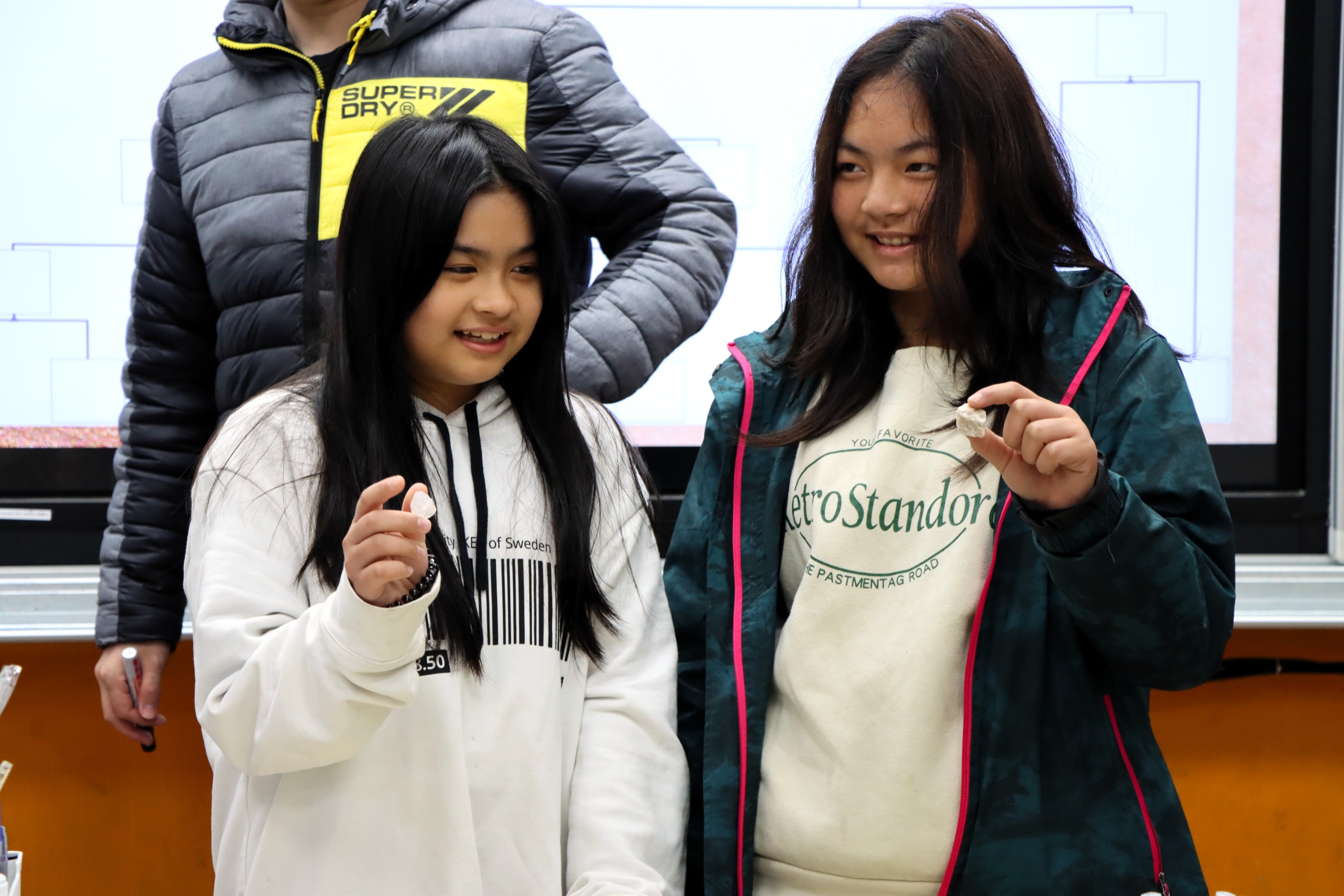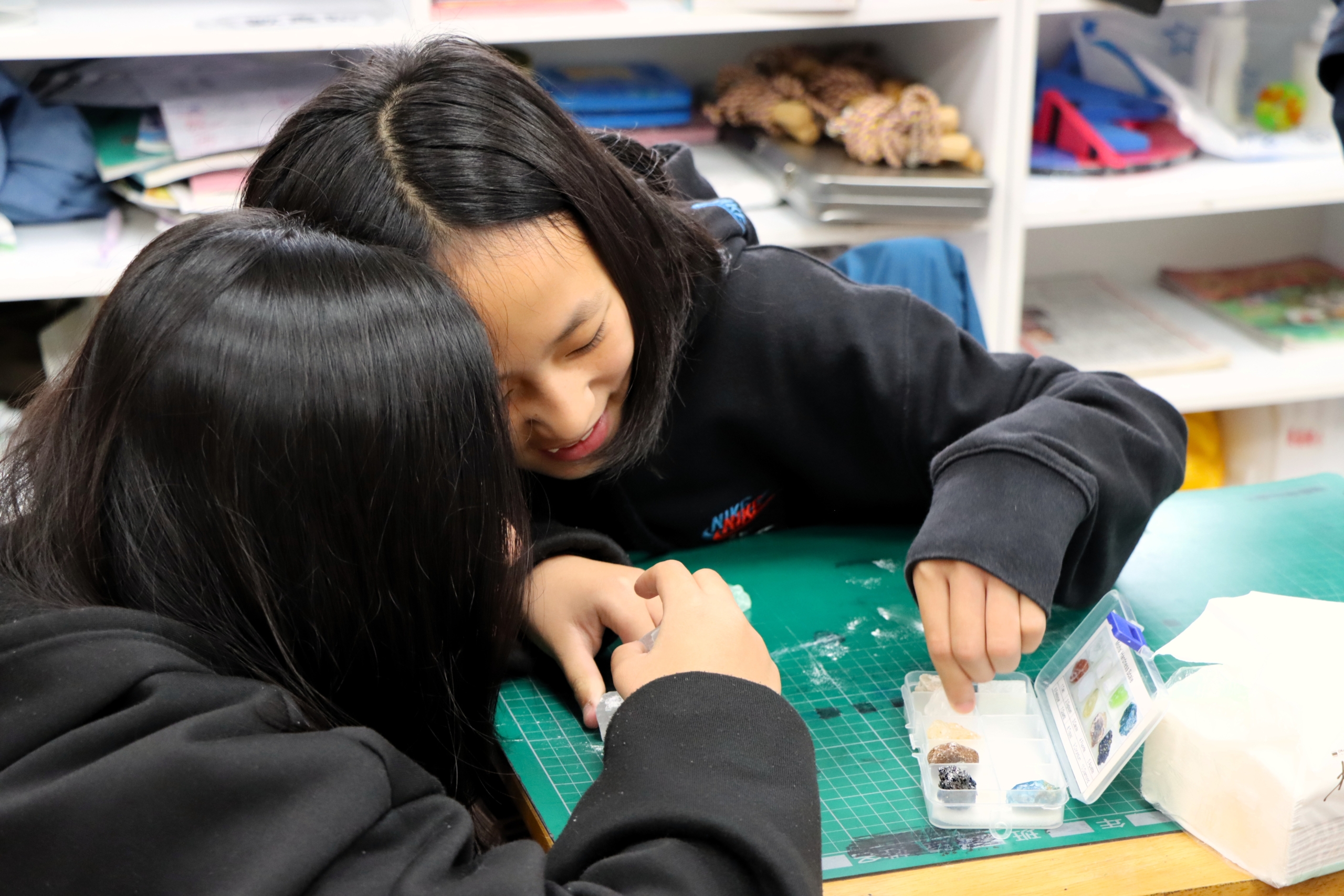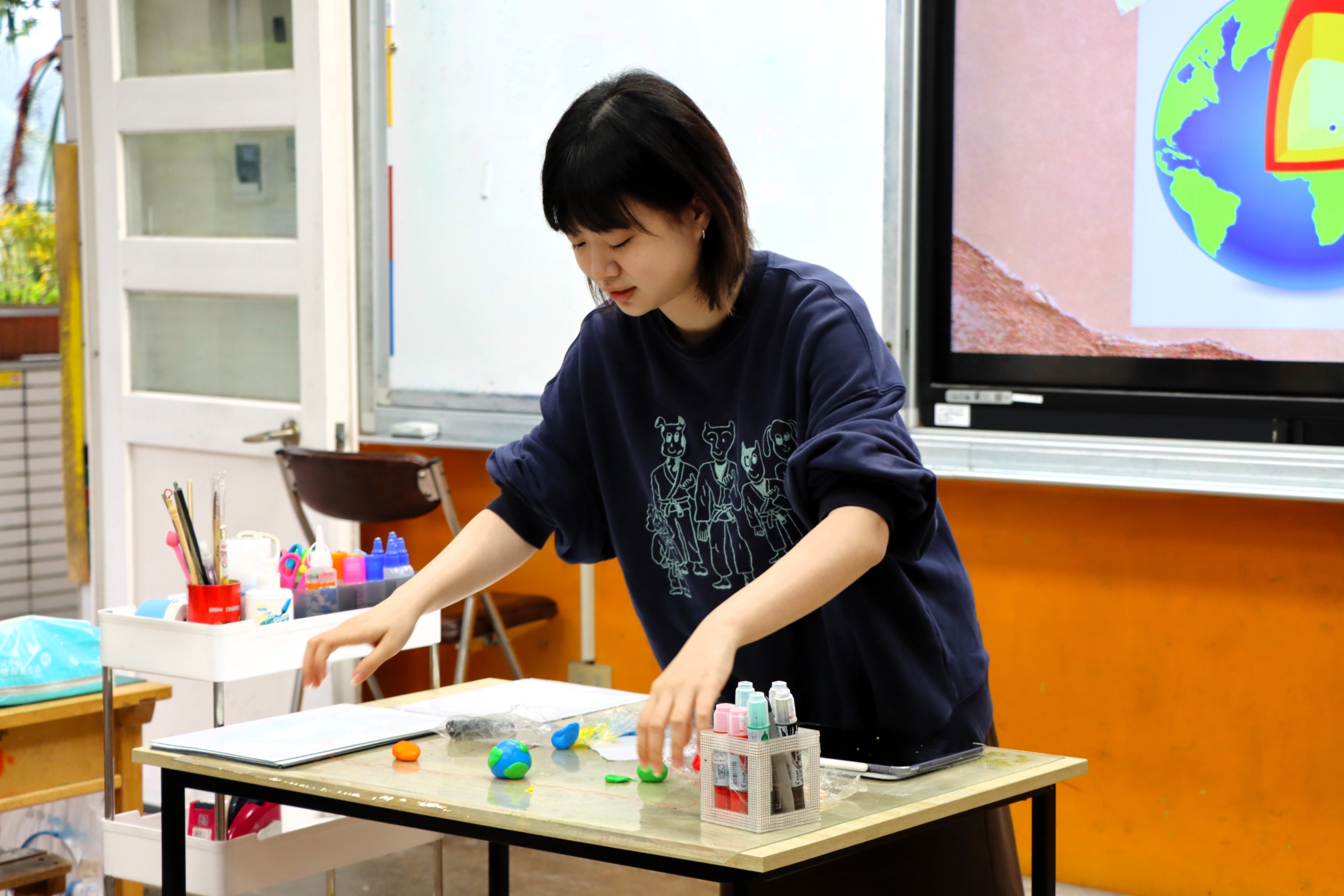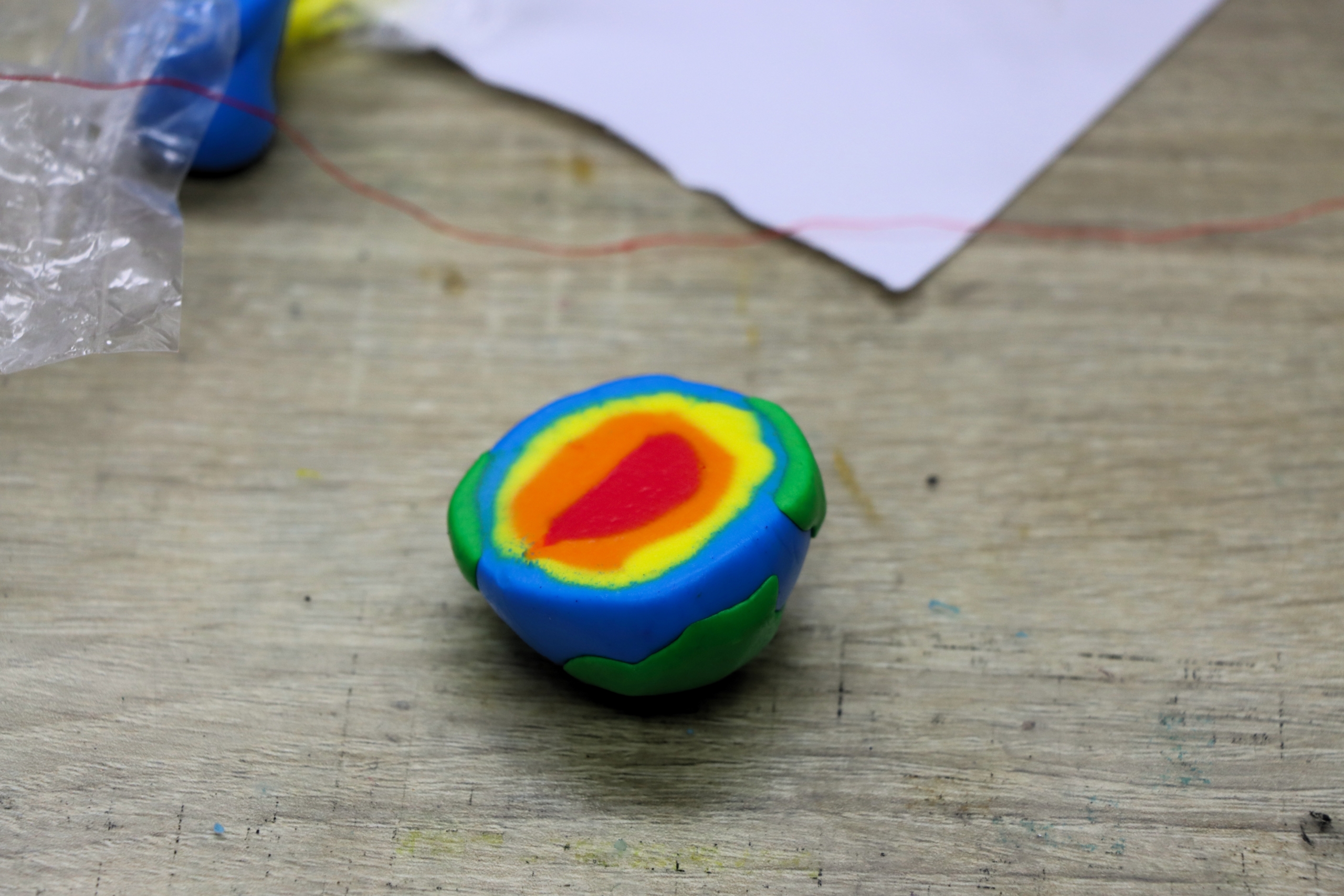We set out from National Central University, expecting the hour-long ride to feel long and tiring. But to our surprise, just as I closed my eyes for a brief nap, I awoke to a breathtaking view of misty mountains that felt almost dreamlike. It was pouring that day—so much so that we briefly wondered whether we’d even make it up the mountain. Yet the moment we stepped onto that land, all our worries faded away, replaced by a deep sense of awe and wonder. For the first time, I truly understood the phrase “wrapped in mist.” Being gently surrounded by fog felt like stepping into a fairytale. Even my mood felt calmer, more peaceful.
This visit to Yisheng Elementary brought back memories of last year’s “Elementary-Middle-University Camp,” where I’d met some of these same children on their campus. Now, stepping into their world and seeing those familiar, smiling faces again made the reunion feel especially warm and meaningful.
From the moment we entered the school, the presence of Atayal culture was unmistakable. The campus was filled with decorations and informative displays—like banners showing traditional archery techniques—that gave us, as Han Chinese students, a fresh and respectful glimpse into a rich heritage. I was touched to see how deeply rooted cultural education could be woven into the fabric of a school. This was my first time witnessing up close how indigenous culture is integrated into education—helping children connect with their identity and heritage in a natural, meaningful way. In Yisheng, the children’s features and sparkling eyes reflect the purity and vitality that only the mountain tribes seem to carry.
Though our time was brief—just two short hours—the lessons were full of substance and creativity. The older students had designed a series of engaging, hands-on science activities. From exploring the link between earthquakes and topography, to classifying different types of rocks, the lessons were rooted in real-life experiences, sparking curiosity about the natural world. What made it even more special was how interactive the class was. Instead of just listening, the children got to do experiments themselves—rubbing different rocks together in pairs to compare their hardness. They were completely immersed, and the classroom buzzed with laughter and discovery.
Although I was only there to film and document the event, I couldn’t help but be swept back to my own elementary school memories. I remembered our science classes being far more passive—nothing like the creative, interactive experience I saw here. A part of me felt envious.
My favorite part came at the end of the class: building a model of Earth’s internal structure using clay. The kids carefully stacked layers of different-colored clay to represent the inner core, outer core, mantle, and crust. Then they sliced their models open to observe the thickness and arrangement of each layer. Watching them so focused and absorbed, their faces lit with curiosity and delight, was deeply moving. When they proudly showed me their little Earths, I was touched by the innocence and creativity behind each one.
This trip may have been short, but it left me with unforgettable memories. Maybe it was the peaceful energy of the mountains, or maybe it was the unique, close-knit atmosphere of the school—but something about this place made it feel special. The bonds between teachers and students here were striking—nothing like the distant, structured interactions we often see in the city. Every teacher knew each child by name, and every child greeted us warmly and naturally. Moments like that are rare.
This wasn’t just a reporting assignment—it felt like a small journey of the heart. I hope one day I’ll have the chance to return to this mountain and see these wonderful children again.
Text by Hsiao, Yong-Jen
Edited by Li, Ruo-Jia
Photos by Hsiao, Yong-Jen






